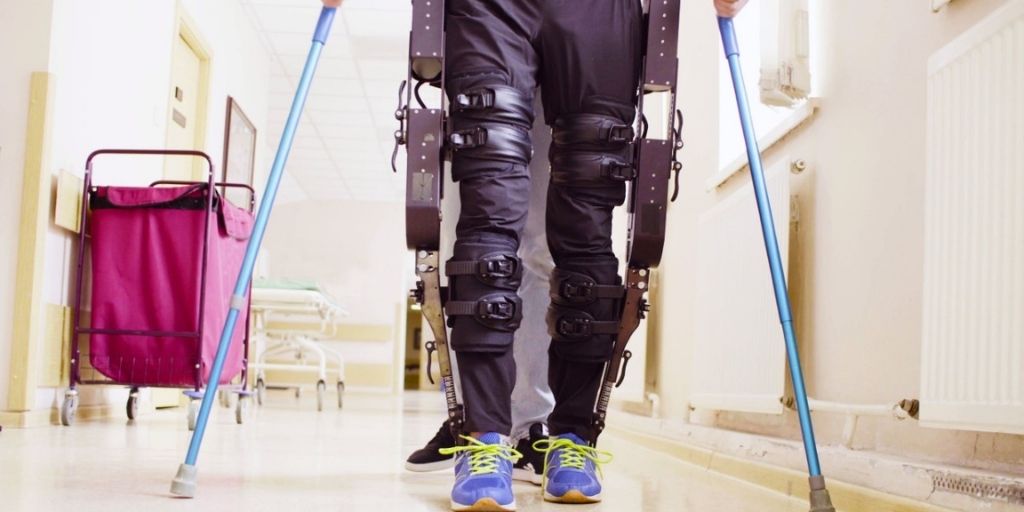
According to the World Health Organisation (WHO), over two billion people are living with a health condition that benefits from rehabilitation. Innovations in rehabilitation engineering are giving patients with once debilitating health conditions independence and a higher quality of life. Here Dave Walsha, sales manager at precision drive system supplier EMS, looks at how micromotors are advancing rehabilitation equipment.
Rehabilitation is a process that helps individuals living with a health condition achieve the highest possible level of function, independence and quality of life in their everyday activities. Part of rehabilitation can include helping patients find ways to improve how they move around, such as through physiotherapy, altering their environment and supporting them with mobility aids.
Mobility aids such as wheelchairs, lifts and prosthetics provide patients with support and assistance that allows them to perform activities they would otherwise be unable to. In order to attain the force needed to physically support a patient, many mobility aids are driven by powerful, high precision micromotors. In particular, powered prosthetics and exoskeletons are at the forefront of rehabilitation engineering.
Precision prosthetics Thanks to advances in engineering, there are over 45,000 people in England who are benefiting from lower limb prosthetics alone. Prosthetics must possess several qualities in order to perform as closely as possible to natural limbs. If the prosthetic is robotic, it must be lightweight to reduce strain for the user and to provide greater comfort for the wearing body part.
It’s important that the powering motors are small in size to avoid making the prosthetic bulky. This allows the prosthetic to perform agile movements and look closer to the typical human form. It also helps the prosthetic limb fit into smaller spaces, such as when reaching for an item in a full kitchen cupboard.
The motorised prosthetic must perform with precision and variable functionality. For example, the same limb must be able to forcefully pull open a door or hold an egg securely without cracking it. In addition, the motors must be highly accurate to ensure the prosthetic executes its actions correctly, such as pressing a lift button on target.
Exceptional exoskeletons
However, motorised wearable devices are not just for those who require a prosthetic limb. For patients who have lost mobility in their limbs due to a spinal cord injury, rehabilitation exoskeletons can be a revolutionary part of their recovery process.
While wheelchairs provide patients with increased mobility, independence and quality of life, they do have some drawbacks. For instance, patients who spend long periods in a wheelchair in the same position can develop other health conditions, such as osteoarthritis and pressure ulcers.
Because of these issues, physiotherapy is required to keep the body moving, but typically relies on the support of multiple healthcare professionals, crutches and a treadmill, and is a difficult and tiring process for all involved. Rehabilitation exoskeletons offer an alternative way to get the patient moving, and offer greater independence, mobility and quality of life benefits than using a wheelchair alone.
The motors are a crucial element of a rehabilitation exoskeleton, being responsible for driving the patient’s movements and supporting their gait. The motor systems must be precise in order to replicate human movement, and offer the optimal amount of torque and motion control.
Advanced engineering
Design engineers must select high performance, reliable motors that meet the demands of rehabilitation equipment. EMS is the sole UK supplier of FAULHABER motors, which are all made in a precision manufacturing process that ensures superior quality and accuracy.
The FAULHABER BXT series is ideal for rehabilitation equipment as it has a flat construction, which helps keep prosthetics and exoskeletons streamlined in design. Thanks to its innovative winding technology, the series can deliver torque up to 134 millinewton metres (mNM), aiding powerful movements. EMS also supplies complementary encoders to the series, which ensure precise speed control of the motors.
Rehabilitation is a demanding process, but offers significant benefits to the patient. Motorised devices, such as prosthetics and exoskeletons, are transforming patients’ lives by helping them regain mobility and independence beyond traditional rehabilitation methods — powering their recovery.








